Summer wheat thrives between 22 and 34 degrees Celsius, whereas winter wheat does best between 5 degrees and 25 degrees Celsius, according to the Production Guideline for Wheat of the Department of Agriculture, Forestry and Fisheries (DAFF).
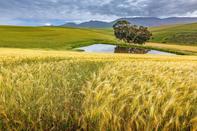
For wheat cultivation in South Africa the climate should ideally be cool and moist for planting, followed by a warm dry season for harvesting.
Wheat requires well-drained fertile loamy to sandy loam soil with a pH of 6 to 7.5, according to DAFF. Wheat production will be negatively affected if the soils are too acidic, which will render some soil nutrients unavailable to the plants.
Soil Requirements
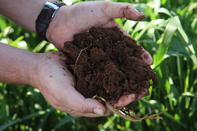
For dryland production, the soils should have a good water holding capacity, such as soil types with a heavy clay layer or a barrier layer that prevents stored water from running off. Very well-drained soils are not suitable for dryland production, but might be suitable for production under irrigation.
Irrigation
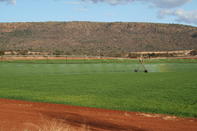
The crop requires about 600 mm of water per year, so conservation farming practices, which include minimum tillage with stubble retention are recommended for moisture conservation in dryland production.
With wheat production under irrigation, water applications should be lowered during flowering, increased during pod filling and ceased during ripening.
Wheat Propagation
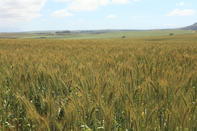
Wheat is propagated from seed. While it is best to buy certified seed each year, there are a few farmers who save seed for planting in an attempt to save costs.
The drawback is that production from these seeds might be affected negatively if the seed is not cleaned properly or treated with the required pesticides, as is the practice with certified seed.
When buying certified seed, there is also a system to follow if something should be wrong with the seed, whereas farmers will only have themselves to blame when they use saved seed. Seed under plant breeders’ rights may not be multiplied, saved or sold without the necessary authorisation or licence from the holders of the rights.
When to Plant Wheat
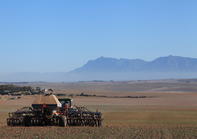
Seed should be planted according to the recommended planting and harvesting time for each area and variety, to reduce climate associated losses caused by drought, heat, cold and rain. The optimum planting date may vary from one season to another, due to the interaction between certain environmental, soil and plant conditions.
In the southern Cape, which is a winter rainfall area, farmers will usually plant after the first rains from mid-April until July and between mid-May and end of July in the summer rainfall areas. Specific temperature ranges are required for various stages of production.
Germination, for example, will not take place below -5 degrees and be negatively affected by temperatures above 25 degrees Celsius. The optimum temperature for pollination, on the other hand, is between 10 and 25 degrees Celsius, according to the Wheat Production Guide.
Wheat Planting Method
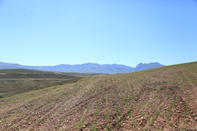
Seeds should be planted evenly, shallowly and in moist soil.
Seeding densities may vary from 20 kg/ha to 25 kg/ha under dryland conditions and 90 kg/ha to 120 kg/ha under irrigation, according to DAFF’s guide, with the planting density varying for different cultivars and according to the moisture availability of the soil. Seed may be planted with no or minimum-till planters or planters fitted with tines or discs.
Farmers generally use wider row spacing under dryland and narrower row spacing when cultivating wheat under irrigation.
By Glenneis Kriel